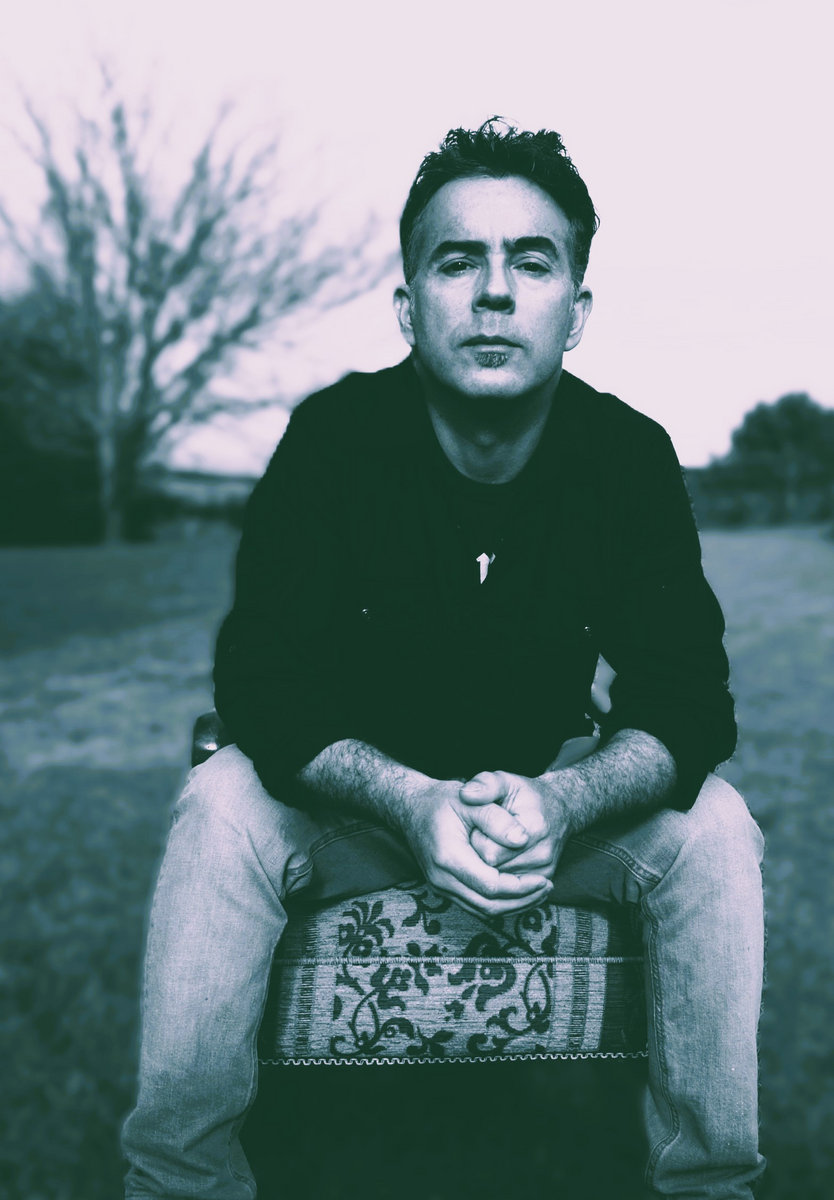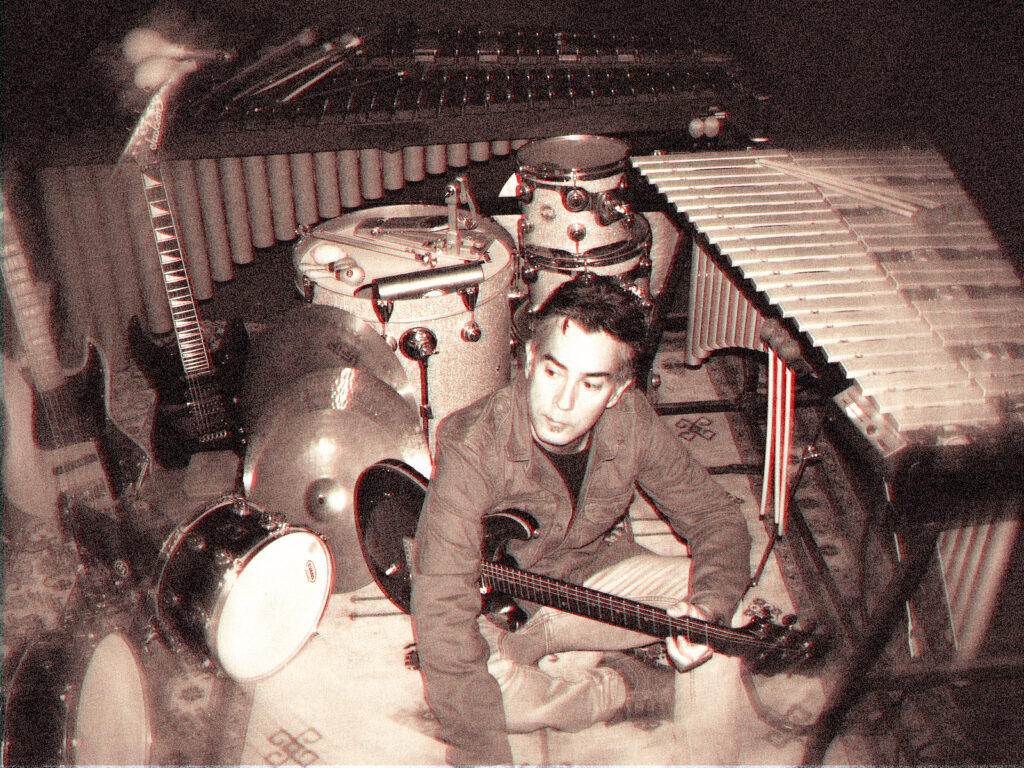In this interview, we sit down with Marcos Sanchez, the musician behind the progressive metal project Wintering Grounds. A solo endeavor that reflects his diverse musical journey, Wintering Grounds offers a unique blend of heavy metal, classical percussion, and experimental textures. From his early love for metal to his eclectic background in classical music, blues, and punk rock, Marcos has brought these influences into a distinctive sound.
With the release of the self-titled album, Wintering Grounds explores new territories, incorporating unconventional instruments like marimba and vibraphone, all while embracing a non-traditional approach to songwriting. In this interview, Marcos shares insights into the creative process behind the project, the challenges of working alone, and how his eclectic background has shaped the music that defines Wintering Grounds.
Wintering Grounds is a solo project where you compose and play all the music. How does working alone compare to collaborating with other musicians in your past projects?
There are advantages and disadvantages, just like everything in life, I guess. On one hand, it’s clear that you lose the interaction factor that you may have in a band, but on the other you gain more control over the whole picture, and I think that this can help make thinks sound very solid. Probably the main difference is the huge amount of work involved, but that’s not a problem for me at all; it’s a constant learning process and I enjoy it from the initial stages in my home studio until the very end with the final mixes.
Your background spans classical percussion, blues, soul, and even punk rock. How have these diverse experiences influenced the sound of Wintering Grounds?
I’m not sure. The idea behind this project was precisely to create the music I like, the kind of music that is natural for me, instead of trying to adapt to other’s people stuff—which is also great and I still do, by the way. However, every experience leaves an imprint, so those experiences can be somewhere. Curiously, I feel that the years studying classical percussion are more present in this project than other styles I’ve been into that you’ve mentioned—styles that could, at first sight, seem to be closer to rock or metal in general—starting from the fact that I came in contact with some of the instruments that I use during those years.
You mentioned that heavy metal was your first love. How did your journey back to metal inspire the self-titled Wintering Grounds album?
Well, the journey begun in the mid-2010’s, when I restarted playing guitar after several years of drumming. I learned to play guitar when I was a teenager in the early 1990s and all I wanted to do back then was play heavy, thrash and death metal music. Of course, by the time I focused again on guitar I already had a wider range of influences and in fact, I felt like it was a different instrument, but the “metal approach” remained as an instinctive behavior.
The album incorporates unconventional instruments like marimba and vibraphone. What inspired you to include these in a progressive metal context?
Nothing in particular except for the fact that I have them at home! Seriously speaking, the most important thing is that, as this is a studio project, I don’t have to worry about playing the music live. There are no limitations when it comes to experimenting with textures, adding layers, doubling or replacing a guitar phrase with mallets or assuming the role of a keyboard simply because I feel more comfortable playing mallets than keys. Very often, I write a lot of guitar parts and then I try to replace them by using mallets and/or keyboards. Trial and error. And well, I’m a huge Zappa fan, so I’m used to a certain level of weirdness.

Your songs often break from traditional structures, starting with a main theme that never returns. What drew you to this unconventional compositional approach?
Although I tend to overthink arrangements, some harmonies, instrumentation, etc., and finishing songs is always a hard process of trial and error, the framework of the songs arose quite spontaneously. By this I mean that one riff led to another in an organic way. When I came up with some ideas for the vocals and it was time to write some lyrics, I realized that every song started with a more or less standard verse – chorus structure and suddenly, at some point, this form “collapsed” and went through a series of changes until the end. Instead of trying to force things and recapitulate, I found more it was more interesting to link the structure to the concept of point of no return, or rather, the idea of the constant flow of life, sometimes moving forward very gradually and sometimes changing abruptly. This concept also fitted my state of mind at the time so it provided a subject for the lyrics.
How does Wintering Grounds differ musically and conceptually from your earlier project, Fern the Fact?
From a musical point of view not much, really, apart from a heavier sound and the greater presence of vocalized parts, but this can be seen as a natural development: the first album was quieter, almost completely instrumental, the second was a little bit heavier, almost half instrumental and half with vocals; this album was initially supposed to be the of the previous project, but as the concept was taking form it became clear for me that a Spanish-English game of words did not really fit anymore. So it’s basically a change of name, to better reflect what the project represents.
With influences ranging from old-school thrash to early death metal and progressive elements, how do you balance nostalgia for metal’s roots with a modern, innovative sound?
I don’t really think about this, I just do what I feel and what it sounds good to me. We all have a background, music that inspire us in one way or another; the challenge in my opinion is to synthesize all these influences and hopefully create something that can’t be completely new but should be somehow different or unique. What works for me is just trying not to think so much, at least in the beginning of the process. But I don’t think nostalgia is—how to express it—I don’t think is a good travel companion.
You’ve studied Music History and classical percussion. How has your academic background shaped your approach to songwriting and orchestration in Wintering Grounds?
Subtly. I was trained as a performer, not as a composer, so I got a general overview of harmony, forms, history of music writing… Lots of things, but nothing too deep. I guess this project owes more to Iron Maiden, Frank Zappa and Devin Townsend in this sense, to name a few!
The layers of keyboards and dense orchestration on the album create an atmospheric feel. What challenges did you face when combining these elements with heavy metal?
I think that the main challenge is to find the space where mallets can fit. This is not a problem in the quieter parts, but things can become complicated when you have heavily distorted guitars involved, so it’s important to find the range in which the instrument can cut through. That’s why I use to record the same idea in different ranges and with a lot of different types of mallets, because you never know what’s going to work; something that you think it’s great when played alone can finally get lost in the mix.
Can you share the story behind one of the tracks on the album that you feel best represents Wintering Grounds’ sound?
My personal favorite is the opening track of the album, Vagrancy, but objectively I think that the most representative is From the Boundaries, both lyrically and musically. Lyrically it covers the subject of the album, which is quite abstract but it’s related to the inexorability of time, the futility of looking back and the inescapable coming of the time when the possibility of a restart no longer exists. Musically, I think is a quite diverse song. The non-return structure mentioned above is present, this time divided in four parts entitled as follows: I. A Florilegium of Scars; II.
Tabula Rasa/Riptide; III. Shedding of Skin and IV: End of the Tether. The first part sets the mood or the context for the song, while the other three parts represents different stages of life, from childhood to death. It features contrasting sonorities, odd signatures almost everywhere, from blast beats to half time heavy grooves, some riffs based in long and changing phrases versus other riffs which have a more straightforward vein… There are some guitar solos, parts with layers of guitars, vibraphone and keyboards and it also features both growls and clean vocals. I think there’s a little bit of everything in this track.
What are your biggest inspirations, musical or otherwise, when creating the complex soundscapes of Wintering Grounds?
It’s difficult for me to name a particular influence. I used to be an avid consumer of music but to be honest I don’t listen to that much music nowadays, specially if I’m working on new stuff, and that happens almost all the time lately. Anyway, the list of musicians that shaped me or made an impact on me and can be present in WG’s music is quite long: Led Zeppelin, Iron Maiden, Voivod, Coroner, Anthrax, Death, King’s X, Alice in Chains, King Crimson, Mahavishnu Orchestra, Camel, Yes, Frank Zappa, Steve Vai, Thelonius Monk, Miles Davis, Opeth, Devin Townsend, Stravinsky, Bartók…
Your career spans multiple genres, but Wintering Grounds feels deeply personal. Do you see this project as a culmination of your musical journey so far?
Well, I like to see it more as a starting point than a culmination. Music is endless, and since I don’t have creative limitations of any kind, this project represents an opportunity to explore with complete freedom, take some risks and keep on learning. It’s something that maybe I should have done before, but you know, it’s never too late.

The Ferrol music scene isn’t traditionally associated with metal. Has being based there influenced Wintering Grounds in any way?
Ferrol might not be a big city but there is a considerable number of musicians and bands of any genre, including the many subgenres of metal, of course. However, I don’t believe that the idiosyncracy of the city has influenced WG’s music in any way. If there’s an “environmental influence” it may be due to the natural characteristics of this part of the region, the northern coast of Galicia, with rainy weather, heavy wind, wild landscapes and all those things that can led to a certain introspection. There’s also an influence coming from a certain circle of friends with a tendency towards experimentation, bands in which I’ve played when I was younger like Labyrinthus, Trece or more recently, Licopodio, but I guess that this kind of “mutual enrichment” between musicians occurs everywhere in the world.
Looking ahead, what’s next for Wintering Grounds? Are there plans for live performances or a follow-up album?
Regarding the first question I would never say never, but it’s highly unlikely. WG will continue to be a studio project. As for the second question the answer is yeah! I’ve almost finished recording two songs that were written more or less at the same time than the ones included in the album. The idea is to release them in an EP, hopefully this year, because they have some unity as they are closer to the spirit of the first album than the new stuff that is coming up, which seems to be a little bit different, at least by now!
Listen to Wintering Grounds’ self-titled album on Bandcamp here.

